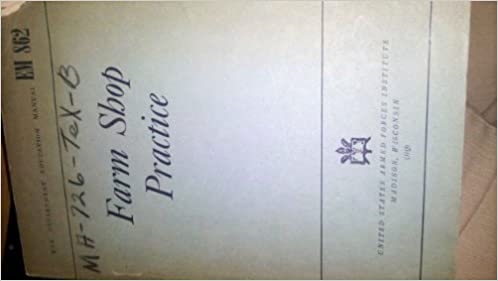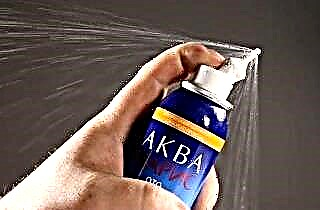Due to the anatomical features of its location, it is the nose that is most susceptible to all kinds of damage. This is especially true for young children who still have poor control over their movements. A broken child's nose requires immediate parenting action. It is very important to promptly respond to injury and see a doctor. Otherwise, a lifelong and pronounced defect may remain on the face. Subsequently, it can only be removed with a complex surgical operation.
To exclude such a development of the situation, we recommend that you find out what are the signs of a broken nose in a child.
Fracture symptoms
 Before naming the symptoms of a fracture, it makes sense to understand the anatomical structure of the nose. This organ is made up of cartilage as well as bone tissue. Cartilage is the building block for the nasal wings, tip and septum of the anterior part of the nose. As for the bone tissue, this is the building material for the posterior part of the organ septum and the nasal dorsum.
Before naming the symptoms of a fracture, it makes sense to understand the anatomical structure of the nose. This organ is made up of cartilage as well as bone tissue. Cartilage is the building block for the nasal wings, tip and septum of the anterior part of the nose. As for the bone tissue, this is the building material for the posterior part of the organ septum and the nasal dorsum.
The symptoms, as well as the severity of the damage to the nose, will directly depend on many factors. In particular, the impact force and the object that caused the injury play a major role in this. The size of the organ is also taken into account, since a large nose is more prone to injury than a small, neat nose.
So, the symptoms of a fracture will be as follows:
- The child may be in severe shock. In some cases, children may even lose consciousness.
- Quite often, the injury is accompanied by severe nausea, vomiting, disorientation in space and dizziness.
- With a broken nose, bleeding can be diagnosed. In some cases, it is characterized by profusion, in others - by moderation (such bleeding is called smearing).
- In the process of palpation (feeling the damaged area), there is intense pain. Even light pressure can cause severe pain. If the child is small, then trying to feel the damaged nose will lead to resistance on his part, crying and screaming.
- Often in the process of palpation, the mobility of the nasal septum is clearly visible.
- Another sign of a fracture is occasional nasal discharge.
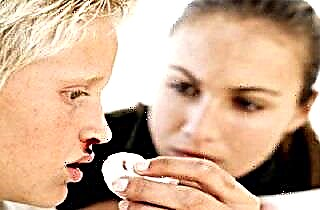 A broken nose is always swollen and the tissues around it swell. When using cold compresses, the swelling disappears only after two or more days. Without a compress, the swelling will be clearly visible from five to seven days.
A broken nose is always swollen and the tissues around it swell. When using cold compresses, the swelling disappears only after two or more days. Without a compress, the swelling will be clearly visible from five to seven days.- Separately, it should be noted the presence of bruising. As a rule, with a fracture, they occur in the areas around the eyes and on the cheekbones.
- Severe trauma is always accompanied by a violation of the integrity of the skin.
- Another clearly visible manifestation of trauma is the deformation of the shape of the nose.
- The accumulation of blood under the nasal mucosa makes breathing difficult and leads to the appearance of a hematoma in the nasal septum. It is impossible to eliminate it with improvised means. This requires surgery.
- Fractures of the nose often lead to profuse tears.
- If an open fracture occurs, then bone fragments are noticeable in the damaged tissues.
Diagnosis and first steps after a fracture
Before starting treatment procedures, it is necessary to correctly diagnose. Acute pain in the injured area and profuse bleeding are not reliable signs of a fracture. The final diagnosis is made by the doctor, guided by the data obtained on the basis of diagnostic measures. Diagnostics will eliminate the possibility of a simple injury, which is also often accompanied by blood loss, severe pain and even loss of consciousness.
 The child is examined by an otolaryngologist, then an x-ray of the facial area is prescribed. Endoscopy can be used as an additional diagnostic method. In addition to the otolaryngologist, other specialists are involved to establish an accurate diagnosis, in particular, an ophthalmologist and a neurologist. Visual inspection makes it possible to:
The child is examined by an otolaryngologist, then an x-ray of the facial area is prescribed. Endoscopy can be used as an additional diagnostic method. In addition to the otolaryngologist, other specialists are involved to establish an accurate diagnosis, in particular, an ophthalmologist and a neurologist. Visual inspection makes it possible to:
- as accurately as possible to determine the nature of the injury;
- identify the intensity of edema;
- detect the presence of a curvature of the nasal septum.
The X-ray will show if there is a fracture and which bones / cartilage are most affected. This is one of the most effective diagnostic techniques.
What to do after a child is injured? First of all, you need to calm the baby. Next, we stop the bleeding - the head needs to be tilted slightly forward so that the blood does not enter the nasopharynx. To avoid severe swelling, apply a cold compress to the damaged area.
There should be no quick or abrupt movements. It is imperative to completely eliminate the possibility of sneezing and blowing your nose. Otherwise, bleeding may intensify. And, of course, after all these actions, you should call a doctor.
Treatment of nasal injuries
As a rule, for minor injuries, treatment occurs at home under direct medical supervision. However, severe trauma (up to a fracture of the nose) must be treated in a hospital setting. In particular, hospital rehabilitation is carried out in the following cases:
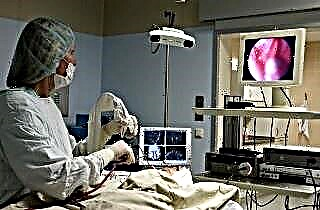 severe deformation of the nasal septum;
severe deformation of the nasal septum;- damage to the eyes;
- disruption of the brain;
- damage to the maxillary sinuses;
- profuse non-stopping bleeding.
As for the medical care itself, it can be of a medicinal nature, or it can consist in surgical intervention. Special medications are prescribed to stop the blood. Treatment is complemented by taking sedatives, pain relievers, and antispasmodics. If an open fracture is detected, then it becomes advisable to take antibiotics, which can completely eliminate the focus of infection. Light damage to the skin without compromising the integrity of the bones are treated with antiseptic agents.
As for serious injuries when the nasal septum is damaged or displaced, professional help is definitely indispensable. It is necessary to return the bones to the correct position as soon as possible, and then fix them so that they subsequently heal correctly.
It is not worth postponing such a procedure, it is recommended to do this on the first day after the injury (but only if there is no concussion). If there is a concussion, alignment and fixation of the bones occurs after about 7 days. For another week, the child is under strict medical supervision.
Possible infection
The symptoms of nasal fractures discussed above can be complemented by others that indicate infection. With nasal injuries, infection can penetrate almost instantly. This is fraught with dangerous complications.
Look for the following telltale signs to check for an infection:
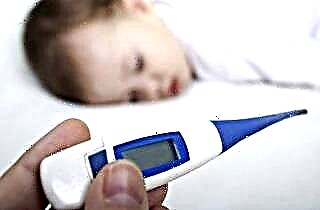 well noticeable redness of the injured facial area;
well noticeable redness of the injured facial area;- swelling of soft tissues and painful sensations of varying intensity;
- a rapid increase in body temperature for no apparent reason;
- the appearance of abscess signs, in particular, softening of tissues and the appearance of purulent formations.
The last sign is the most alarming, since it is fraught with great danger. Often it provokes such a complication as a brain abscess. As a rule, such a pathology occurs due to the introduction of infection through the blood or the breakthrough of purulent neoplasms in the damaged areas. Fortunately, this happens quite rarely.In order to completely exclude such a development of events, it is necessary to consult a doctor to perform a resection of purulent accumulations (it is strictly forbidden to do such a procedure on your own).
In some cases, infection of the nasal mucosa may occur. This usually happens after a fracture with heavy bleeding.
We do not advise you to delay contacting a specialist. Be aware of the pain that accompanies the fracture. In addition, damaged facial bones may not heal properly. As a result, asymmetry will appear. But you should not panic either: a broken nose is not fatal and in childhood it is definitely easier and more imperceptible.

 A broken nose is always swollen and the tissues around it swell. When using cold compresses, the swelling disappears only after two or more days. Without a compress, the swelling will be clearly visible from five to seven days.
A broken nose is always swollen and the tissues around it swell. When using cold compresses, the swelling disappears only after two or more days. Without a compress, the swelling will be clearly visible from five to seven days. severe deformation of the nasal septum;
severe deformation of the nasal septum; well noticeable redness of the injured facial area;
well noticeable redness of the injured facial area;